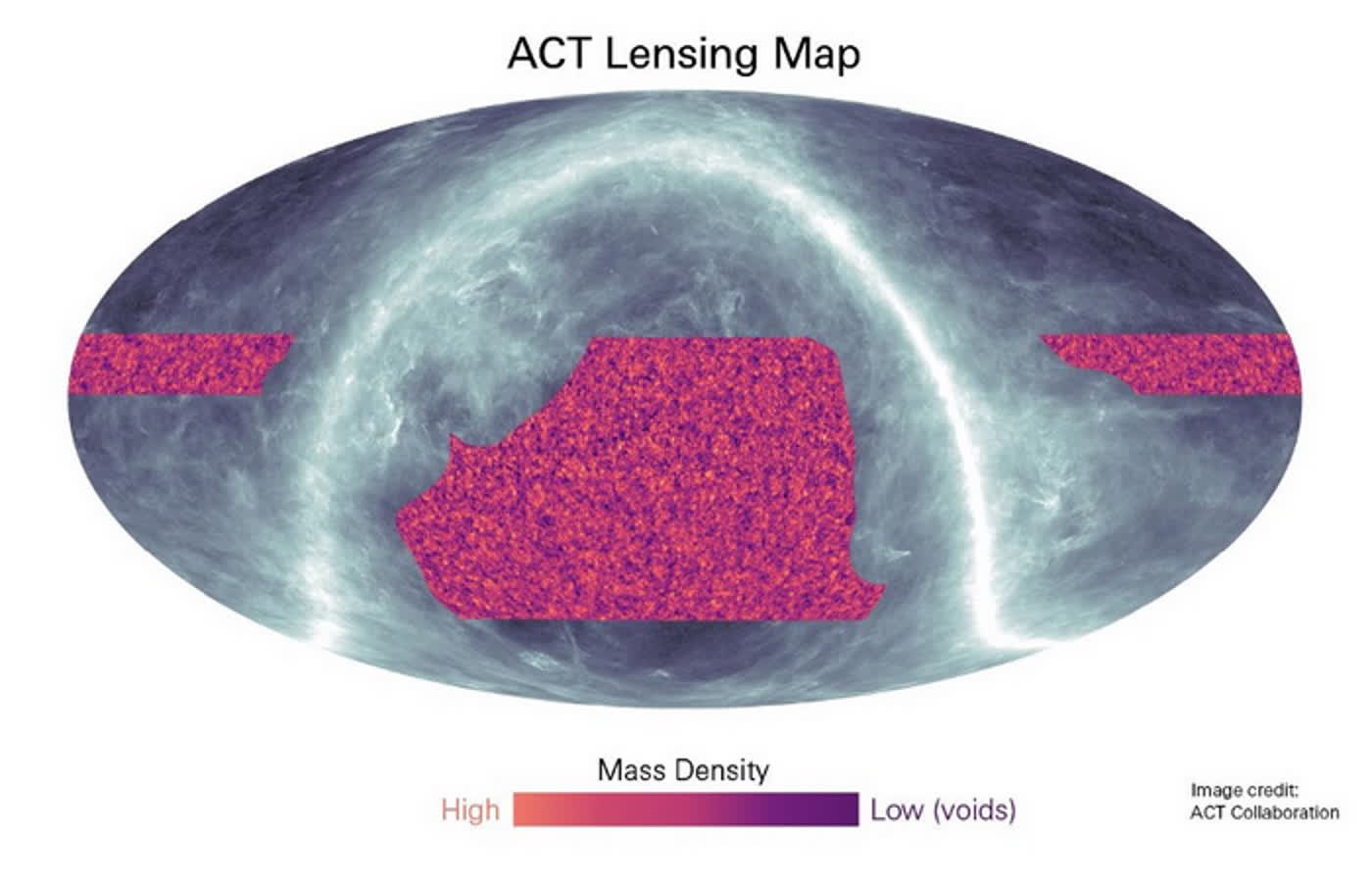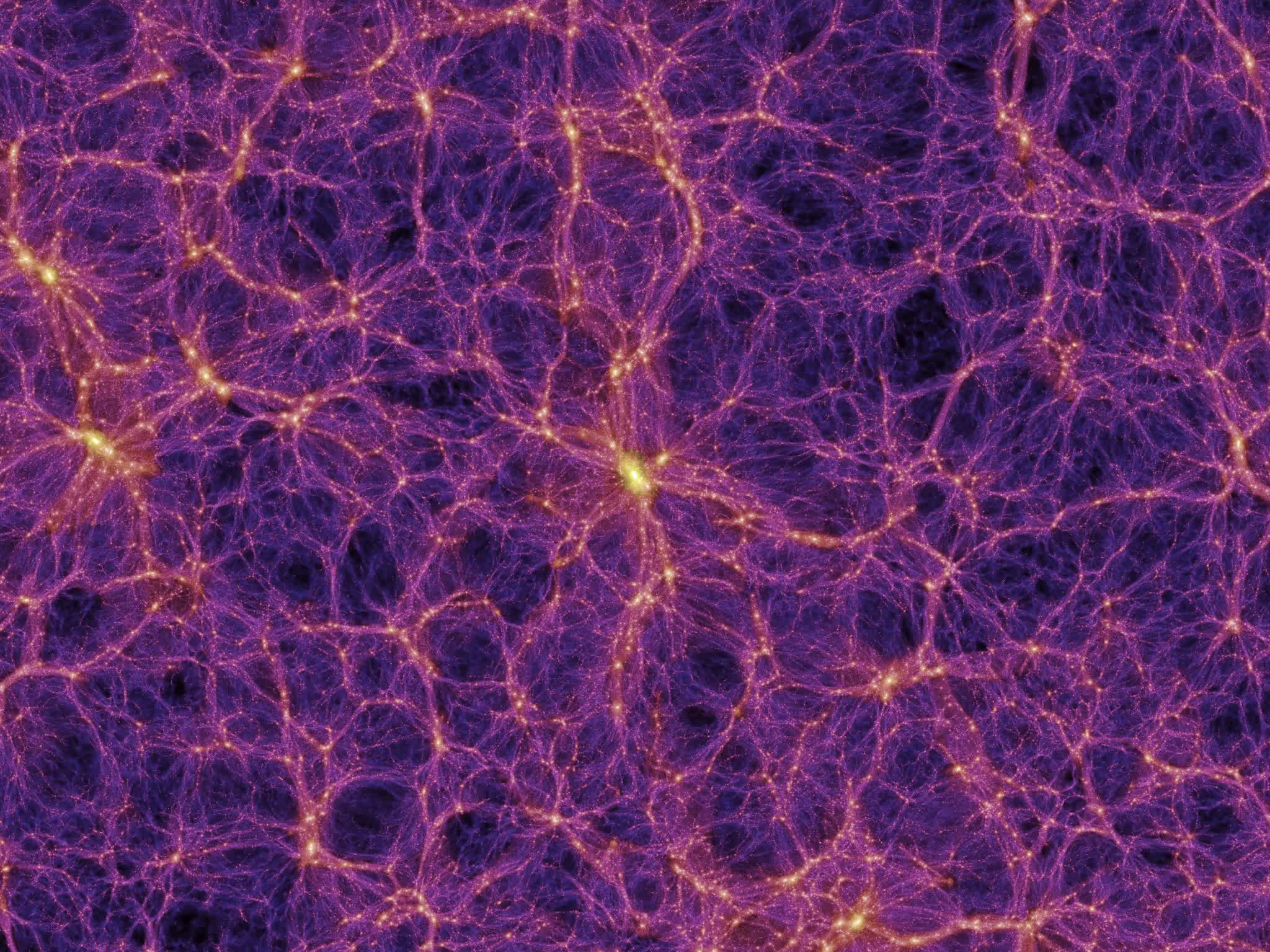What just happened? Dark matter is that mysterious, invisible substance permeating the entire universe that binds stars, planets, galaxies and everything else together. This intangible cosmic web has now been portrayed in unprecedented detail, confirming once again that our current knowledge about physics and cosmology isn't an illusion.
An international team of over 160 astronomers used the Atacama Cosmology Telescope (ACT) to shed new light on the invisible dark matter accounting for around 85 percent of the entire mass in the universe. The landmark study confirms Albert Einstein's theories about gravity and cosmology, reaffirming once again the validity of the Standard Model of physics.
Before the ACT observatory was decommissioned at the end of 2022, researchers collected enough data for their study by looking again at the cosmic microwave background (CMB). The CMB is a diffuse radiation that fills the entire observable universe, and is traditionally considered the first electromagnetic wailing of the cosmos having originated when the universe was only 380,000 years old.
Astronomers tracked how the gravitational pull of large structures in the universe – including dark matter – warps the CMB radiation throughout the 14 billion years it took to arrive on Earth, just like a magnifying glass bends light passing through the lens. The new, detailed map made from these observations show that the "lumpiness" and the expansion rate of the universe agree with the Standard Model of cosmology based on Einstein's theory of gravity.

Blake Sherwin, professor of cosmology at the University of Cambridge, said the new map provides novel insights into an ongoing debate some have called "The Crisis in Cosmology." The "crisis" here stems from recent measurements made by using the background light emitted by stars in galaxies rather than CMB fossil radiation alone.
These results seemed to suggest that dark matter was not "lumpy" enough to bind the universe together, making the Standard Model of cosmology essentially "broken" or at least incomplete. Conversely, the new map made with the ACT observatory is in "good agreement" with the predictions originating from the Standard Model. No more need to cook up new physics laws to "fix" our knowledge about how nature works, for now.
Suzanne Staggs, director of ACT and Professor of Physics at Princeton University, said the "CMB lensing data rivals more conventional surveys of the visible light from galaxies in their ability to trace the sum of what is out there." Taken together, CMB lensing and the best optical surveys are clarifying the "evolution of all the mass in the universe."
